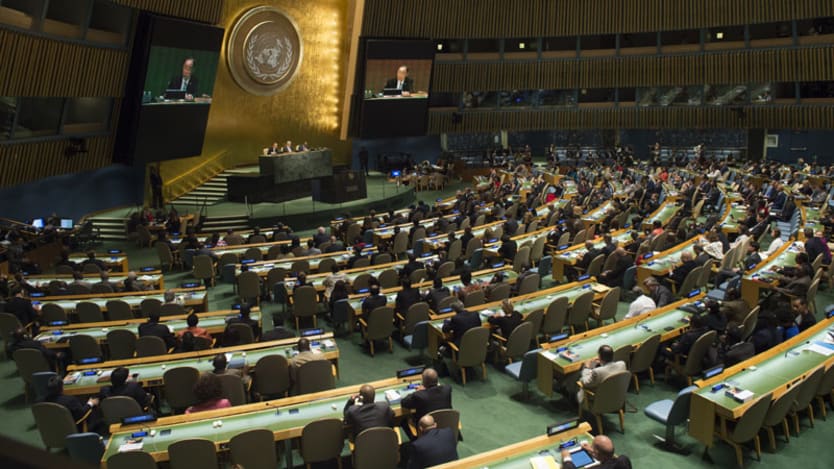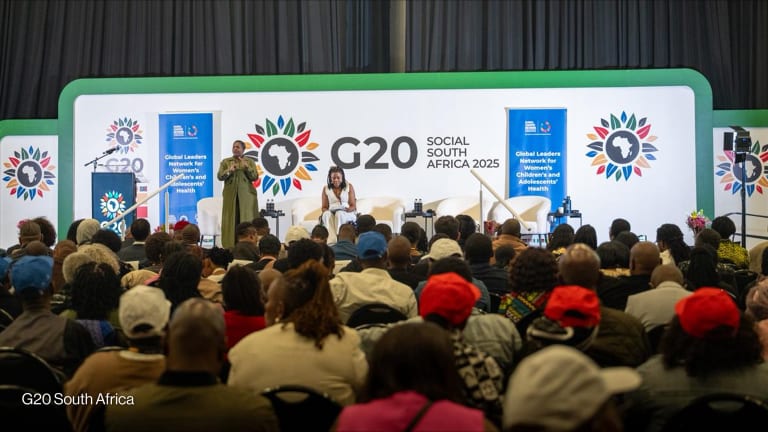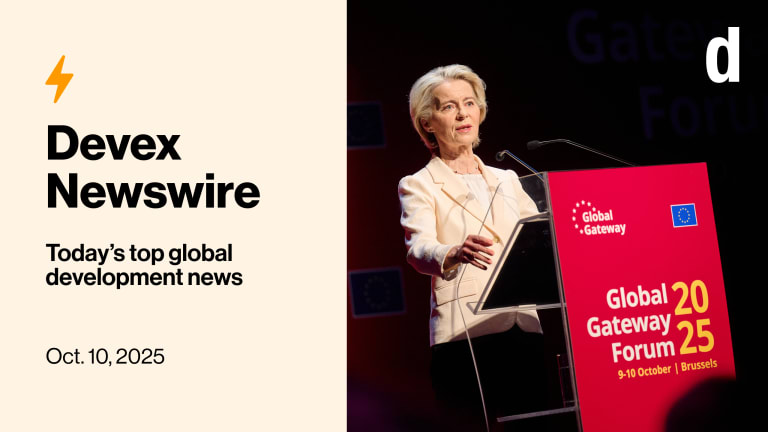
EDITOR’S NOTE: This commentary is authored by Andrew Griffiths, Beyond 2015 co-chair and Sightsavers UK, Philipp Schönrock, Beyond 2015 co-chair and CEPEI Colombia, Leo Williams, Beyond 2015 international coordinator, and Naiara Costa, Beyond 2015 advocacy director.
The U.N. Sustainable Development Summit taking place in New York later this week is both an end and a beginning.
It’s an end because the formal adoption of the outcome document during the summit will be the last milestone in the process to finalize the post-2015 agenda — widely recognized as the most inclusive, transparent and participatory intergovernmental process so far, mobilizing millions of people, organizations, experts, U.N. entities and governments around the world. And it’s a beginning because this major event will mark the start of a new, 15-year journey toward a sustainable world that puts people and planet first, and that gives all of us — including those suffering from poverty, injustice and marginalization — the opportunity to actively participate in reaching our development goals at the local, national, regional and global levels.
The summit gives heads of state and government from across the world the historic opportunity to shift the global discourse from policy to action, and thus match the ambition of the new agenda, by presenting specific commitments toward national and regional strategies and accountability mechanisms for the achievement of the sustainable development goals — to be developed, implemented, monitored and reviewed with stakeholders at all levels.
What are the next steps? Beyond 2015 has thought of seven practical ideas for our leaders to follow as they prepare for the upcoming U.N. summit:
1. Recognize the urgency of the 2030 agenda and seize the momentum. Although the new goals will come into effect in January 2016, governments should seize the political momentum generated by the summit to introduce clear plans and timelines for the participatory implementation of the new agenda at national and subnational levels. The realization of the “leaving no one behind” concept must be a focus from the outset, and the inclusion of people experiencing poverty and marginalization is critical.
2. Set up clear implementation mechanisms and accountability channels at national and subnational levels. The definition of the post-2015 agenda was the niche of foreign affairs ministries and development agencies. Now it is time to “domesticate” this agenda by setting up national, multisectorial and participatory commissions and institutions to define plans and strategies for the successful implementation and monitoring of the agenda at the national and subnational levels.
3. Allocate appropriate funds for the sustainable development goals. The great ambition of the post-2015 outcome document will only become a reality if governments allocate appropriate resources for its implementation, prioritizing sustainable development investments, especially pro-poor infrastructure and public services.
4. Communicate the new agenda and the SDGs at national, subnational and local levels. As established in the outcome document, this is an agenda “of the people, by the people, and for the people,” and people will only be able to “own” the agenda if they are aware of it. Governments must create opportunities for real citizen dialogue on the implementation of the agenda, especially among marginalized and excluded groups, to discuss how they will participate in the implementation of the SDGs and share best practices.
5. Ensure broad participation. Governments must set up clear channels for civil society and other stakeholders to meaningfully engage in the formulation of national strategies and plans to achieve the SDGs, and in the monitoring and review of progress at national, subnational and local levels. Fulfilling their commitment to “reach the furthest behind first” will only be possible if governments enable civil society and stakeholders are able to operate freely and effectively in pursuit of the SDGs, by ensuring timely access to clear information as well as freedom of the press and other forms of media, freedom of peaceful assembly and freedom of association.
6. Commit to accountability. Governments must set benchmarks to track progress toward the SDGs and develop open mechanisms for third-party actors — including civil society — to share data and contribute to the monitoring and review of achievements. Additionally, we expect all governments to demonstrate leadership and willingness to participate fully and actively in agreed global and regional follow up and review processes.
7. Respect the universal, interlinked and indivisible nature of the agenda. National plans should encompass the entire agenda instead of focusing on specific goals given that all goals address interconnected development issues. This means that the only way to successfully reach the SDGs is through a multisectoral approach to implementation, far from the silo approach of the MDGs.
These are just some initial steps we recommend for governments to take as they embark on the global journey toward sustainable development. If governments seize the opportunity of the summit to display strong ownership of the new agenda and political will to implement it then national dialogue on how to realize these commitments will be greatly boosted. The challenges associated with the implementation of the agenda are numerous but the potential for transformation is enormous and our joint efforts can make these changes happen.
Beyond 2015 is a global civil society campaign aiming for a strong framework to replace the Millennium Development Goals. Beyond 2015 brings together almost 1,500 civil society organizations in over 135 countries around the world.








